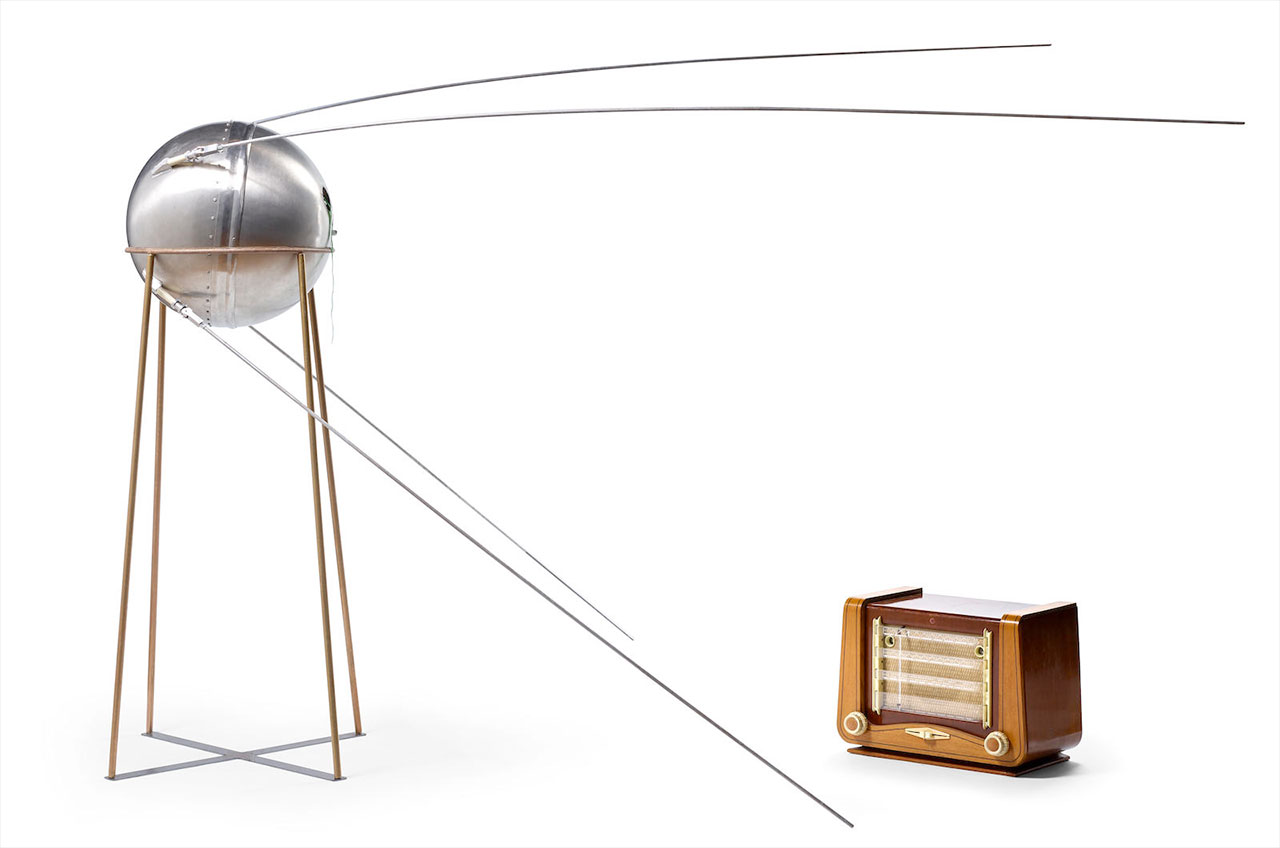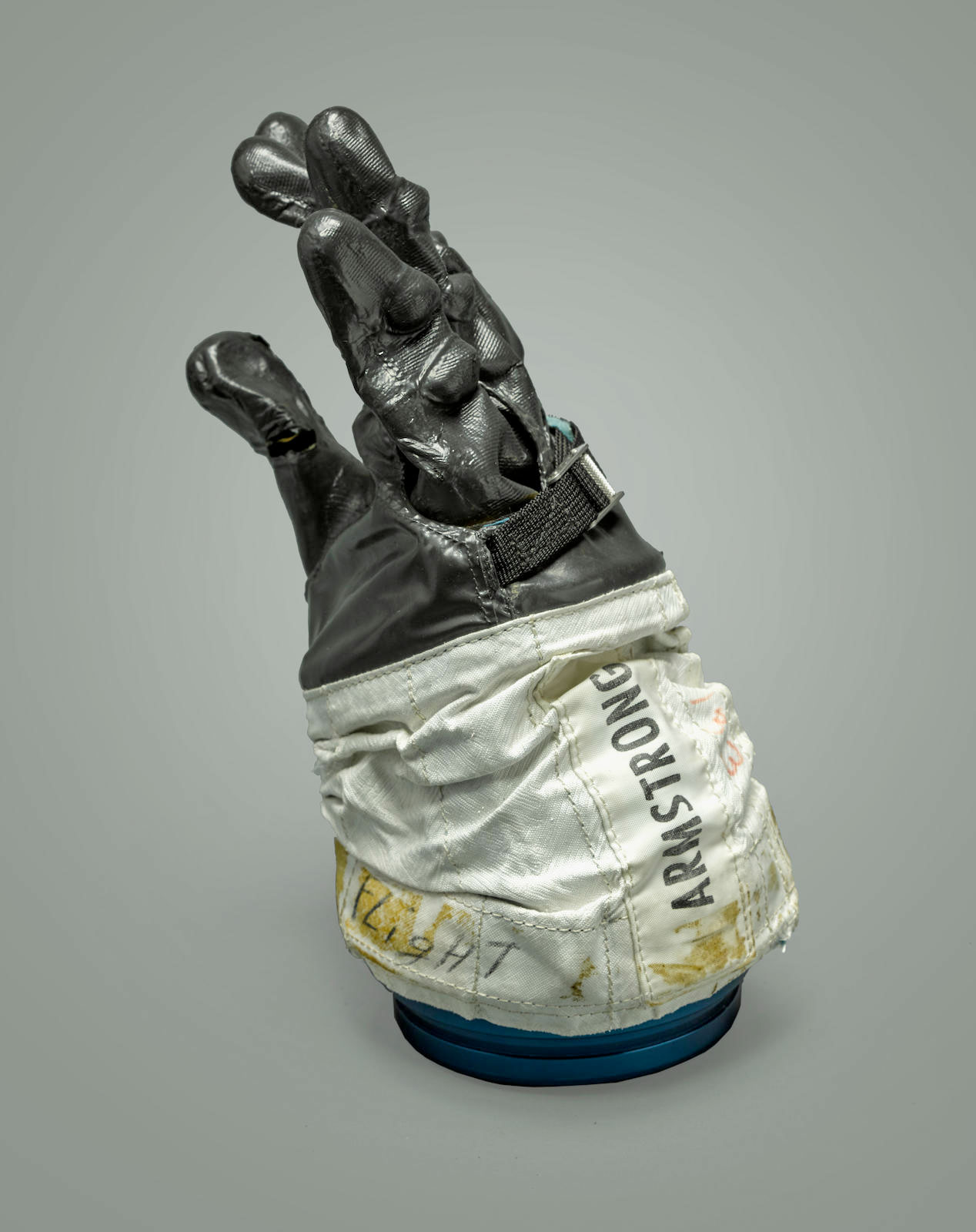Sputnik Replica Sells for $850K Sixty Years After Launch of Original Satellite

A full-scale, vintage test model of the world's first artificial satellite sold for more than three-quarters of a million dollars on Wednesday (Sept. 27), one week before the 60th anniversary of the launch of Sputnik-1 and the start of the Space Age.
Bonhams auctioned the "beeping" replica of the now-iconic satellite, with its polished metal sphere and four protruding antennas, for $847,500 (including the premium charged to the buyer) at its New York gallery. The winning bid, placed by an unidentified buyer on the telephone, far surpassed the pre-auction estimate and the amount paid for a similar Sputnik replica sold by Bonhams for $269,000 in 2016.
"The telephone [bidder] seems to hold it at $700,000," said Bonhams' auctioneer, citing the hammer price to applause in the room. [Sputnik 1: World's 1st Artificial Satellite Explained (Infographic)]
"I should say back to Earth, but perhaps it isn't," he added, beginning the bidding on the next lot in the Air and Space-themed sale. The auction included more than 200 artifacts from early aviation and space exploration missions.
Bonhams described the Sputnik replica in its sale catalog as being contemporary to the original satellite.
"Produced at the OKб-1 [OKB-1], the Experimental Design Bureau-1 factory, also known as the S. P. Korolev Rocket and Space Corporation Energia in 1957, sometime prior to the launch of the Sputnik-1," the catalog read. "One of only a few made to test ground Electromagnetic Compatibility (EMC) and Electromagnetic Interference (AMI) testing."
The approximately 23-inch (58-centimeter) Sputnik replica included a functioning live transmitter, such that it could, in theory, broadcast the same "beep, beep, beep" tone as the original, and featured a modern 12-volt power supply to facilitate its operation. The lot also included a vintage Tesla Maj 620A broadcast receiver.
Breaking space news, the latest updates on rocket launches, skywatching events and more!
According to Bonhams, "only a handful" of known vintage replicas of the satellite exist, including the two the auction house has now sold, another at Energia's museum located near Moscow and one at The Museum of Flight in Seattle. A third privately-owned example was acquired by Richard Garriott, the son of NASA astronaut Owen Garriott, who self-funded his own flight to the International Space Station in 2008.
The EMC/EMI lab model that was sold Wednesday came from the collection of Heinz Miller in Austria.
The original Sputnik, launched by the former Soviet Union on Oct. 4, 1957, orbited Earth 1,440 times over the course of 21 days before being destroyed during its re-entry into the atmosphere. The only surviving piece from Sputnik-1 is its arming key, which protected the satellite's batteries from becoming depleted while it was being prepared for launch.
The key was acquired by a private collector, who in turn loaned it to the Smithsonian. It is on display at the National Air and Space Museum in Washington, D.C. today.
The Bonhams sale's other Air and Space lots did not come close to the amount bid for the Sputnik — none of the 200 other artifacts commanded six figures.
Among the sale's other highlights though, were a stamped envelope signed by the Apollo 11 crew of Neil Armstrong, Buzz Aldrin and Michael Collins, which sold for $20,000, and a Soviet scramjet liquid propellant rocket engine that went to a bidder for $25,000. A metal and plastic desktop model of the Soviet Union's planned lunar lander, the LK-3, also sold for $25,000.
The second-best-performing lot, after the Sputnik, was a glove sized for Armstrong which sold for $50,000. The right-hand, intravehicular glove was issued to the Apollo 11 commander for training, according to Bonhams.
Follow collectSPACE.com on Facebook and on Twitter at @collectSPACE. Copyright 2017 collectSPACE.com. All rights reserved.

Robert Pearlman is a space historian, journalist and the founder and editor of collectSPACE.com, a daily news publication and community devoted to space history with a particular focus on how and where space exploration intersects with pop culture. Pearlman is also a contributing writer for Space.com and co-author of "Space Stations: The Art, Science, and Reality of Working in Space” published by Smithsonian Books in 2018.
In 2009, he was inducted into the U.S. Space Camp Hall of Fame in Huntsville, Alabama. In 2021, he was honored by the American Astronautical Society with the Ordway Award for Sustained Excellence in Spaceflight History. In 2023, the National Space Club Florida Committee recognized Pearlman with the Kolcum News and Communications Award for excellence in telling the space story along the Space Coast and throughout the world.


